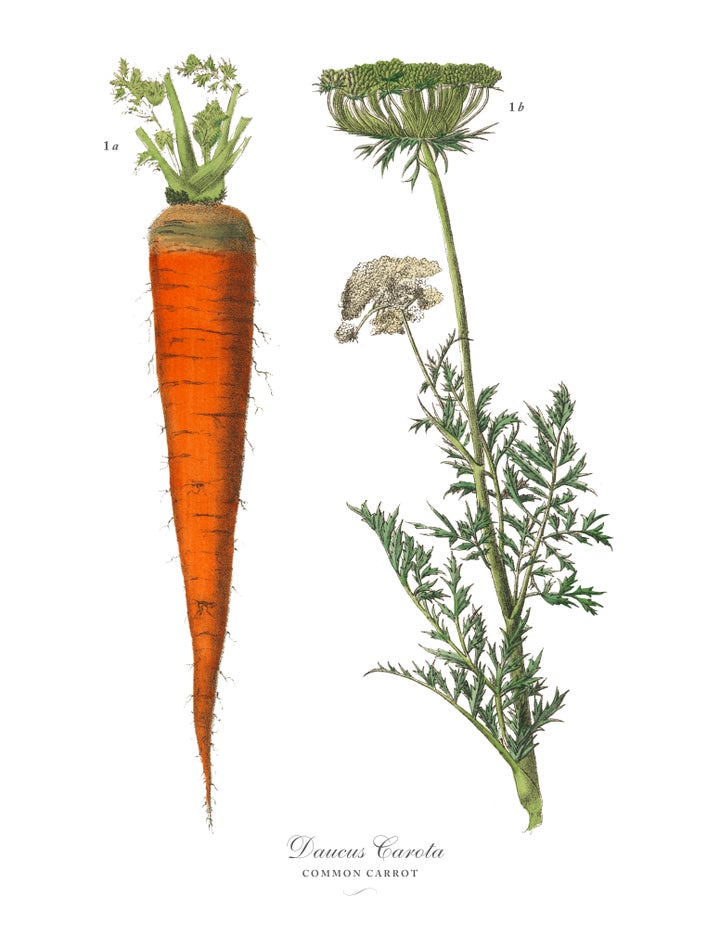On the surface, a plant-based diet sounds simple. And although it’s been trending lately, the idea of eating “mostly plants” has been in the zeitgeist since Michael Pollan spelled it out in “The Omnivore’s Dilemma” in 2006.
That said, anyone who has tried to move towards a plant-based diet knows that doing so isn’t quite as simple as it sounds.
A strict plant-based diet means eating no animal products (aka veganism), but not everything is black and white.
Obviously, a plant-based diet centres on plants: fruits, veggies, whole grains, nuts, seeds, beans and legumes. Strictly speaking, it excludes all animal products, including not only meat but eggs and dairy. Some people follow a more flexible plant-based diet that includes a little bit of meat and/or dairy, which isn’t technically a plant-based diet. But since both strict plant-based diets and more flexible ones are valid choices with proven health benefits, we’ll talk about both of them here.
“Some people say plant-based and mean vegan while others don’t,” said Marisa Moore, a registered dietician. “I use the term to mean mostly plants, not vegan.”
Then, there’s the question of what kind of plant-based food should be included in the diet. “Another group takes plant-based to mean 100% ‘whole foods’ plant-based, meaning even processed foods that are made entirely of plants are excluded,” said Taylor Wolfram, a registered dietician. She also pointed out that there is “no standard definition of processed food,” which further muddies the idea of what a “whole foods” plant-based diet really is.

The bottom line is: One person’s plant-based diet might exclude animal products and processed foods, while another person’s might make a little bit of room for these things. What all plant-based diets have in common is that they emphasise eating mostly minimally processed plant foods.
There’s evidence that eating a more “whole foods” plant-based diet can improve health, even if you don’t cut out animal products completely.
Good news for anyone who can’t fathom giving up cheese or steak forever: You don’t need to eat 100% plant-based to see health benefits. Shivam Joshi is an internal medicine physician at the New York University School of Medicine who eats an entirely plant-based diet, but he doesn’t necessarily recommend that to his patients.
Many of them are immediately turned off by the idea of going completely vegetarian or vegan. “I don’t tell people to go vegetarian or vegan,” Joshi said. Instead, he tells them to eat plant-based meals most of the time, without worrying about cutting out meat and dairy altogether.
“You can get most of the benefits of a full-on plant-based diet by eating this way. No one has really shown that full-on vegan is better,” he said.
Moore also pointed out that eating a mostly plant-based diet “leaves room for flexibility, which can remove a lot of stress around eating. I’m a big fan of flexibility when it comes to food ― no need to try to be perfect.”
Moore suggested a limited amount of flexibility, though: “If you’re newly transitioning to a plant-based diet, you might start by adding just one or two plant-based meals per week and gradually work your way down.” Or, you could make a goal to only eat meat X times per week, depending on what feels realistic for you.
Joshi emphasised a diet rich in unprocessed, high-fibre plant foods. In the short run, he said, these foods deliver high levels of vitamins and minerals, and can help lower cholesterol and blood sugar levels. In the long run, these effects can improve a person’s health outcomes.
“Epidemiological data shows that the more plant foods someone eats, the lower their risk for certain chronic diseases, including cardiovascular disease, Type 2 diabetes and some cancers,” Wolfram said.
OK, but what does shifting to a plant-based diet actually look like?
“Whenever someone is considering a plant-based diet, I generally suggest starting off slow,” said Ryan Maciel, a registered dietitian with Precision Nutrition. “Start with one of your favourite dishes ― let’s say a chicken stir-fry. Replace the chicken with beans, lentils or tofu as your plant-based protein source.” In other words, take some time to get comfortable with cooking and eating a few simple plant-based meals before you start overhauling your entire diet.

You can also focus on upping your fruit and vegetable intake before making any other major changes. Joshi pointed out that only 1 in 10 Americans eats the recommended five servings per day, and that making this a priority will have a huge impact ― you’ll get more vitamins, minerals and fibre, and likely eat less saturated fat (which the U.S. Department of Agriculture recommends limiting to 10% of your total calories in order to lower your risk of heart disease). And, you’ll get the most out of those five-a-day if you eat a variety, including leafy greens every day, because you’ll also get a variety of nutrients.
When and if you do start eating primarily plant-based foods, be sure to prioritise protein and other key nutrients that are less abundant in plant foods.
Wolfram emphasised the importance of prioritising protein-rich plant foods.
“Legumes are a key food group for plant-based eaters to meet protein and amino acid recommendation,” she said. Protein recommendations vary from person to person, but the National Academy of Medicine recommends that adults get 0.8 grams of protein per kilogram of body weight each day, about 50 grams per day for a 140-pound person.
“Legumes include beans, lentils, peas, peanuts and soy foods such as tofu and tempeh. Plant-based eaters should strive for a minimum of 3 to 4 servings of these foods every day (1/2 cup beans, lentils, peas and soy foods; 1/4 cup peanuts; 2 tablespoons peanut butter).”
Maciel emphasised the importance of getting adequate micronutrients. Here are some ways to do that:
Dark leafy greens, beans and fortified grains are a good source of iron, and eating them alongside foods rich in vitamin C (like citrus and bell peppers) can help with iron absorption.
“Omega 3-fatty acids are essential fats that can improve your health by reducing your risk of heart disease,” Maciel said. Omnivores can get these from fatty fish, but walnuts, flaxseeds and chia seeds are all good plant-based sources.
Dairy is off-limits, but it’s a major source of calcium. “There are plenty of other options for you to choose to meet your needs,” Maciel said. Fortified plant-based milks, tofu, broccoli, leafy greens, beans, nuts and seeds are all good sources.
“It can be challenging to get enough vitamin D from whole food sources, especially for vegetarians,” Maciel said. Although things like plant-based milk, orange juice and cereals are often fortified, people who don’t get much sun exposure might be lacking in vitamin D ― talk to your doctor about possible supplementation.
“Iodine is needed to make thyroid hormones,” Maciel said. “Since iodine is naturally found in foods such as fish and dairy, plant-based eaters excluding these foods may be at risk.” Seaweed and fortified grains are good sources, or you could switch to using iodised salt (many salts at the grocery store are iodised).
“Vitamin B12 is only found in animal products and fortified foods,” Maciel said. “Therefore, vegans need to take a B12 supplement or consume foods fortified with vitamin B12. Plant-based options include fortified plant-based milks, fortified cereals and fortified nutritional yeast.”
On a plant-based diet, your “staples” will look a little bit different.
“Especially if this is a new way of eating, know that it may take some time to figure it all out,” Moore said. “You’ll need to plan a little more to make sure you’re getting the nutrition you need and not going hungry because you’re not sure what you can eat.” Cooking big batches of veggies and grains at the start of each week can make things easier, as can keeping plenty of canned or dried beans, nuts and seeds on hand.
Although processed foods shouldn’t make up the bulk of your plant-based diet, store-bought frozen veggie burgers and other plant-based meat alternatives are a smart way to round out your meals when you’re pressed for time and/or staring down an empty fridge. Likewise, fortified cereals and breads are good sources of many of the nutrients that Maciel mentioned above, so look for whole-grain versions and make them a staple in your kitchen.
One final thing to keep in mind: A plant-based diet isn’t realistic for everyone, and that’s OK.
What many plant-based diet advocates forget is that not everyone has access to unprocessed plant-based foods, and that even those who do might not realistically be able to eat them regularly. Roughly 11% of the U.S. population is food-insecure, meaning they don’t consistently have access to fresh and healthy foods. For anyone in this position, a plant-based diet will be nearly impossible. And even individuals who can access whole foods might not have time to prepare them regularly ― cooking whole foods from scratch takes longer than picking up ready-made food or cooking convenience foods. This is important to keep in mind when deciding whether a plant-based diet is realistic for you ― it’s also a reason not to extol the virtues of such a diet to everyone you meet, as it might instil shame in someone who just can’t eat that way.
“Plant-based diets can be appealing to those with eating disorders and disordered eating because certain foods are restricted and, therefore, the diet can reduce calories,” Maciel said. “For these individuals, a plant-based diet or any diet that restricts certain foods probably isn’t the best idea.” Instead, he recommended that those individuals shift away from food rules, with the help of a registered dietitian or therapist, if possible.
And of course, remember that how you eat is ultimately up to you. “If someone has no interest in eating plant-based, then it isn’t something they should force,” Wolfram said. Eating one way or another doesn’t make you morally superior to anyone, and no one way of eating can guarantee health (or, just as importantly, happiness). Also, remember that the way you choose to eat might evolve over time, and there’s no need to put a label on your diet ― if eating an entirely or mostly plant-based diet seems like a good idea for you right now, for health reasons or other reasons, do it! But if your priorities shift in the future, it’s OK that your eating habits do, too.
